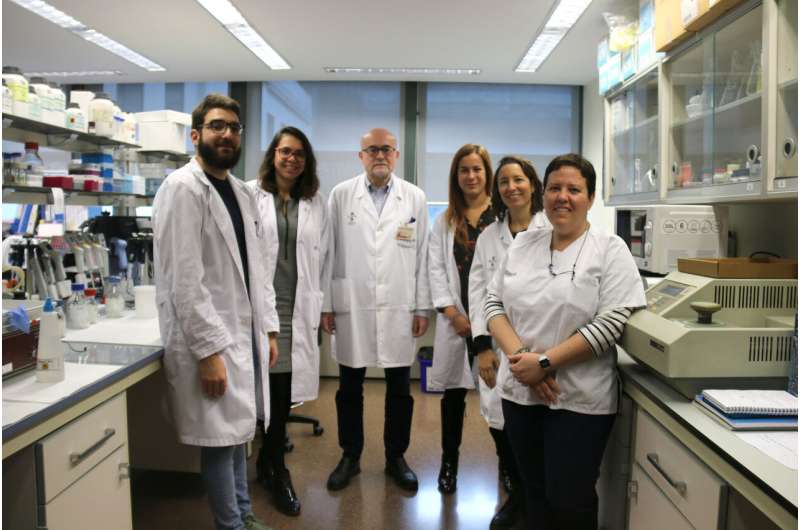International study opens up new ways to stop the metastasis of melanoma

Research staff of the University of Valencia, the Health Research Institute INCLIVA and the Clinical Hospital of Valencia have participated in a study that opens up new opportunities and ways of studying the development of new cáncer biomarkers by discovering a type of genetic material that prevents cancer cells of the skin from acting at a distance and forming metastases.
The study, developed in collaboration with the Langone Medical Center in New York, has been published in prestigious journal Cancer Cell.
The research revolves around circular RNA, a type of recently-described ribonucleic acid (RNA). While most RNAs are linear molecules, some are made circular. Unlike most RNA, circular RNA (circRNA), instead of producing proteins, is part of complex regulatory systems whose functions remain unclear.
The publication, which includes both studies with cell cultures, with mouse animal models, and with tissue samples of human melanomas, is the first to show that the loss of a circARN called CDR1as favors tissue invasion and melanoma metastases. In fact, the analysis of human tissues carried out concludes that there is a remarkable relationship between low levels of CDR1as activity and a short patient survival.
Melanoma is the most aggressive skin cancer and a significant model to investigate the basis of metastasis. The main cause of death of patients with melanoma is the appearance of metastasis or the aggressive spreading of cancer cells, and this is where the relevance of CDR1as resides.
The importance of this study is twofold, as it not only reveals the functional, prognostic and predictive role that CDR1as has in patients with melanoma, but also puts the spotlight on the fact that circular RNAs are key molecules for metastatic processes. In this sense, Eva M. Hernando states that this study "provides new knowledge about the aggressive behavior of melanoma and is the first to show evidence that circular RNA can act as a suppressor molecule of metastasis."
"We discovered that this circARN, called CDR1as, slows a known pro-cancerous protein called IGF2BP3 and reveals a new function of CDR1as that may have therapeutic implications," adds the first author of the article, Douglas Hanniford.
Currently, there is still a critical need for cancer patients to identify who will have a higher risk of developing metastases. In addition, for patients with advanced disease, having biomarkers capable of predicting what their response to therapy will be would be of great help for a selection of the most appropriate, effective and personalizd treatment. In this sense, the amount of CDR1as represents a valuable biomarker applicable to melanoma and other types of tumours.
More information: Douglas Hanniford et al. Epigenetic Silencing of CDR1as Drives IGF2BP3-Mediated Melanoma Invasion and Metastasis, Cancer Cell (2020). DOI: 10.1016/j.ccell.2019.12.007



















